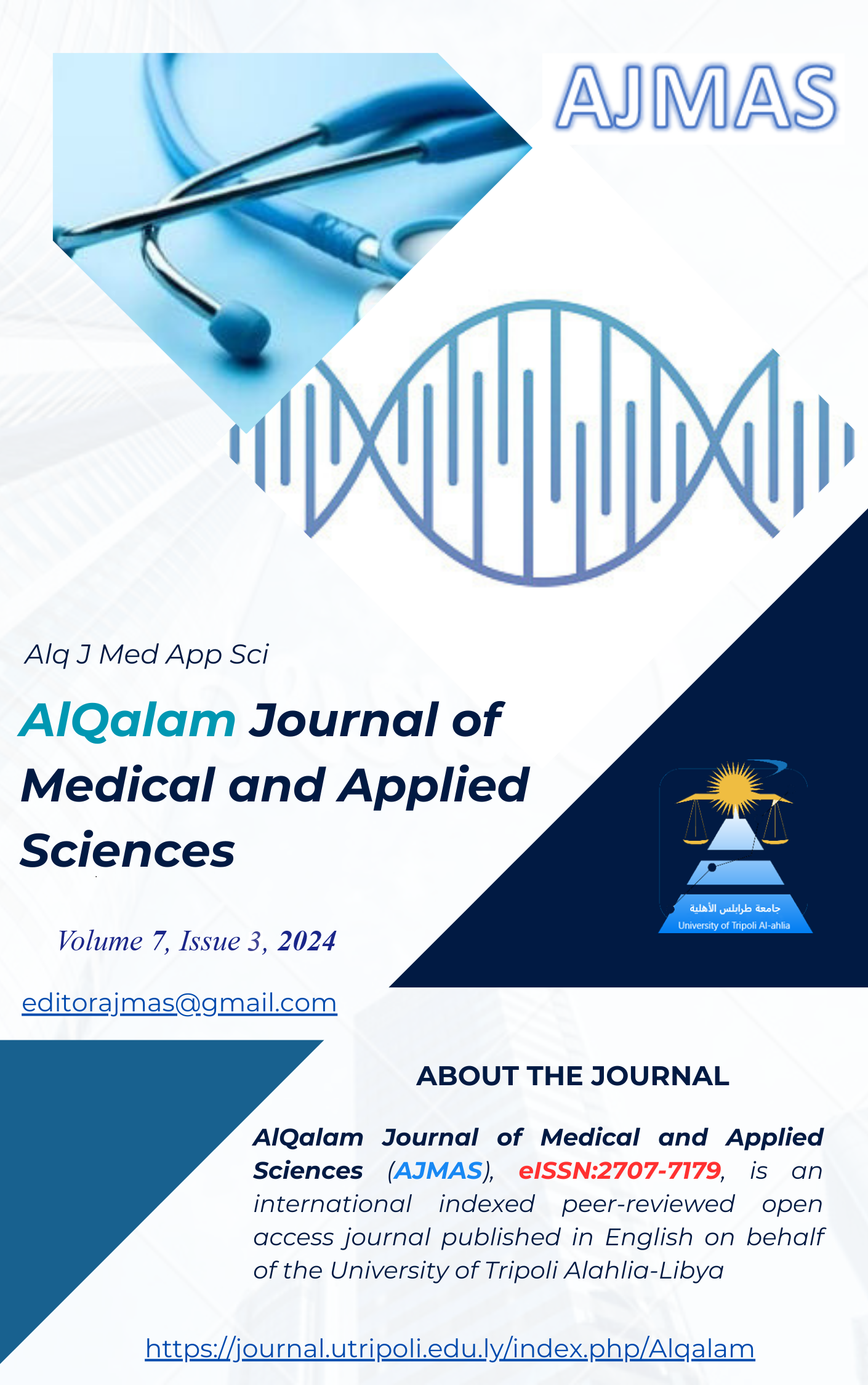Detection of Eimeria Parasites in Sheeps and Goats in Alhamada Area, Libya
DOI:
https://doi.org/10.54361/ajmas.247355Keywords:
Coccidiosis, Eimeria, livestock, protozoa,Abstract
Since the Alhamada area is known for its rangelands and most of its inhabitants raise animals, especially sheep and goats, this study was conducted by collecting samples randomly from six herds of sheep distributed randomly from the specific areas of Qurayat and Ghadames This study was aimed to determine the prevalance of Eimeria, which causes coccidian in sheep's and study the effects of many factors such as age, sex, and the breeding system, it is the first study conducted in the Hamada area on this parasite, using microscopic examination, 54 samples of sheep and goat feces were examined, of different ages and of both sexes in the month of May 2022. The result showed that the infection rate was 28% in sheep and 43% in goats. It was noted that there were no significant differences for age in the infection rate, as the highest infection rate was in the age group (>2) years (39%), while the lowest infection rate was in the age group of (1-2) years (7%), it was also shown that there is no significant difference for gender on the infection rate, as the infection rate in males was (22%) and females (48%). The results showed a slight difference in the infection rate between the open and closed breeding systems in the Hamada region, with the closed system averaging 25% compared to 20% in the open system. Clinical signs also appeared on some of the infected animals, including diarrhea, general weakness, and some of them showed plucking of wool/hair.
نظراً لأن منطقة الحمادة معروفة بمراعيها ويقوم أغلب سكانها بتربية الحيوانات وخاصة الأغنام والماعز، أجريت هذه الدراسة بجمع عينات عشوائياً من ستة قطعان من الأغنام موزعة عشوائياً من مناطق محددة في قريات وغدامس. وهدفت هذه الدراسة إلى تحديد مدى انتشار طفيلي الأيميريا المسبب للكوكسيديا في الأغنام ودراسة تأثير العديد من العوامل مثل العمر والجنس ونظام التربية، وهي أول دراسة تجرى في منطقة الحمادة على هذا الطفيلي، وباستخدام الفحص المجهري تم فحص 54 عينة من براز الأغنام والماعز من مختلف الأعمار ومن كلا الجنسين في شهر مايو 2022. وأظهرت النتيجة أن نسبة الإصابة كانت 28% في الأغنام و43% في الماعز. وقد لوحظ عدم وجود فروق معنوية للعمر في معدل الإصابة حيث كان أعلى معدل إصابة في الفئة العمرية (>2) سنة (39%) بينما كان أقل معدل إصابة في الفئة العمرية (1-2) سنة (7%)، كما تبين عدم وجود فروق معنوية للجنس في معدل الإصابة حيث بلغ معدل الإصابة في الذكور (22%) والإناث (48%). وأظهرت النتائج وجود فرق طفيف في معدل الإصابة بين نظامي التربية المفتوح والمغلق في منطقة حمادة حيث بلغ متوسط النظام المغلق 25% مقارنة بـ 20% في النظام المفتوح. كما ظهرت علامات سريرية على بعض الحيوانات المصابة منها الإسهال والضعف العام وبعضها ظهر عليها نتف الصوف/الشعر
Downloads
Published
How to Cite
Issue
Section
License
Copyright (c) 2024 Amal Hmaid, Juma Ahmed, Hana Dhaw, Ajaweed Aboulqsim, Rokaya Senni

This work is licensed under a Creative Commons Attribution 4.0 International License.















